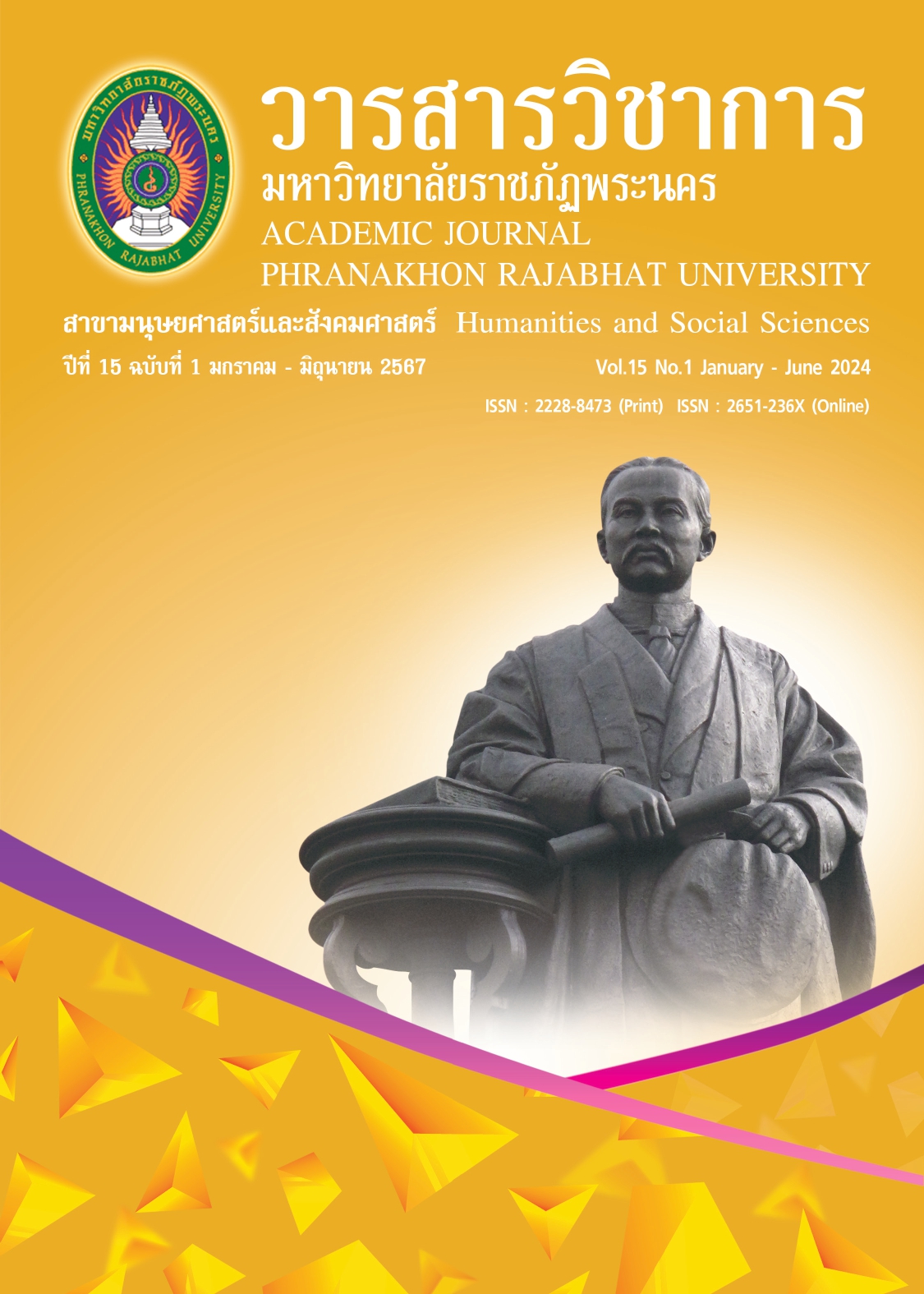THE IMPACTS OF USING VISUAL IMAGES ON MATHEMATICS ACHIEVEMENT OF GRADE 4 BHUTANESE STUDENTS
Keywords:
Visual Images Learning Achievement, Satisfaction, Mathematics, Fraction LessonsAbstract
The study aimed to investigate the effects of using visual images on the mathematics learning achievement and satisfaction of grade 4 Bhutanese students. It involved 31 participants from a middle secondary school and adopted a quasi-experimental design, employing both qualitative and quantitative methods. Lesson plans served as the interventional tools, while learning achievement tests and semi-structured interviews were used for data collection. Quantitative data were analyzed using paired sample t-tests, and qualitative data were analyzed using thematic analysis. The analysis of pretest and posttest scores revealed that the mean score of the posttest was greater than that of the pretest. Semi-structured interviews indicated that participants not only developed a positive attitude towards mathematics but also demonstrated motivation and satisfaction with the use of visual images in learning. Themes such as "Experience," "Engagement and Enjoyment," "Comprehension of Concepts," "Enhanced Learning Satisfaction," and "Self-Confidence" showed how students were encouraged to gain a deeper understanding of abstract and complex concepts. Therefore, the research outcomes would benefit educators and curriculum designers in enhancing students' comprehension and interest in learning mathematics.
References
Alake, R., & Salawu, M. O. (2012). Using PowerPoint for Effective Teaching of
Mathematics in Higher Education. Educational Research and Reviews, 7(6),
-146.
Barclay, C. (2018). Semi-Structured Interviews. In Know How. Retrieved from https://know.fife.scot/__data/assets/pdf_file/0028/177607/KnowHow Semistructured-interviews.pdf
Bhutan Council for School Examinations and Assessment. (2019). Grade VI CBAT 2018. Thimphu, Bhutan: Author. Retrieved from http://www.bcsea.bt
Bhutan Council for School Examinations and Assessment. (2018). Grades III and VICBAT 2018. Thimphu, Bhutan: Author. Retrieved from http://www.bcsea.bt
Choden, P. (2021). The Integration of Manipulatives and Cooperative Learning in
Measurement of Grade 4 Bhutanese Students (Master’s Thesis). Rangsit
University, Thailand.
Dayame, A. M. (2019). The Effects of Manipulative and Visual ModelsIn Conceptualizing Fractions. International Journal of Advanced Research and Publications, 3(8), 80–85. https://doi.org/10.5281/zenodo.3491217
Dorji, K., & Tshering, P. (2020). Issues and Challenges of Bhutanese Mathematics Curriculum: A View from the Exploratory Study. Turkish Journal of Mathematics Education, 1(1), 1-9.
Dukpa, P. (2014). Bhutanese attitude towards Mathematics: Findings from a survey of grade 6 students. Thimphu, Bhutan: Royal Education Council.
Jalbani, L. N (2015). The Impact of Effective Teaching Strategies on the Students’ Academic Performance and Learning Outcome. GRIN Verlag.
Jamtsho, T. & Chalermnirundorn, N. (2019). The use of Games Incorporating Manipulatives in Teaching Geometry to Grade six Bhutanese Students. Journal of Humanities and Social Science Valaya Alongkorn, 14(3), 159-170.
Jones, J. P., & Tiller, M. (2017). Using Concrete Manipulatives in Mathematical Instruction. Dimensions of Early Childhood, 45(1), 18–23. https://eric.ed.gov/ ?id=EJ1150546
Kaitera, S., & Harmoinen, S. (2022). Developing mathematical problem-solving skills in primary school by using visual representations on heuristics. LUMAT: International Journal on Math, Science and Technology Education, 10(2). https://doi.org/10.31129/ lumat.10.2.1696
Kothari, C. R. (2004). Research Methodology: Methods and Techniques. New Age International.
Lari, F. S. (2014). The Impact of Using PowerPoint Presentations on Students’ Learning and Motivation in Secondary Schools. Procedia-Social and Behavioral Sciences, 98, 1672–1677.
Mcleod, S. (2023). Bruner - learning theory in education. Simplypsychology.org. https://www.simplypsychology.org/bruner.html
Ministry of Education. (2019). iSherig-2 Education ICT Master Plan 2019-2023. Retrieved from http://www.education.gov.bt/wp-content/uploads/2021/09/iSherig-2-Education-ICT-MNasterplan-2019-2023.pdf
M. Nawale, A., & Nawale, A. (2022). Using PPT as an Effective Cutting Edge Tool for Innovative Teaching-Learning. Indian Journal of Language and Linguistics, 3(1), 1–12. https://doi.org/10.54392/ijll2211
Raiyn, J. (2016). The Role of Visual Learning in improving students’ Higher Order
Thinking Skills. Journal of Education and Practice, 7(24), 115-121.
Rigzin. (2021). The Application of Multimedia Technology in Teaching and Learning Mathematics of grade 5 Bhutanese students. (Master’s Thesis). Rangsit University, Thailand.
Rigzin, & Chalermnirundorn, N. (2021). The Application of Multimedia Technology in Teaching and Learning Mathematics of grade 5 Bhutanese Students. Academic Journal Phranakhon Rajabhat University, 12(2), 226–242.
Royal Education Council. (2022). Mathematics Curriculum Framework (PP-XII). Thimphu, Bhutan: Author. Retrieved from https://rec.gov.bt/curriculum-frameworks/
Schwarz, V. J. (2016). Fractions: Building a strong foundation based on conceptual understand. Retrieve from http://teacher.yale.edu/curriculum/viewer/initiative_11.06.06_u
Shabiralyani, G., Hasan, K. S., Hamad, N., & Iqbal, N. (2015). Impact of Visual Aids in Enhancing the Learning Process Case Research: District Dera Ghazi Khan. Journal of Education and Practice. 6(19), 226-233.
Sherab, K., & Dorji, P. (2013). Bhutanese teachers' pedagogical orientation in primary classes: A factor on quality of education. Journal of the International Society for Teacher Education, 17(1), 18−28.
Tshewang, R. (2015). Bhutanese eight grade students' and teachers' perceptions of their classroom learning environment in relation to the new mathematics curriculum. (Doctoral Dissertation). Queensland University of Technology, Australia.
Wangchuk, K. & Dendup, T. (2023). School Principals’ Perceptions on the Conducive Learning Environment and their current practices: An exploratory study at Tashigang District, Bhutan. Social Asia Issues, 16(5), 1-21.
Wuolle, S. (2016). How and Why, Teachers use Real World Connections in the Secondary Mathematic Classroom. (Master’s Theses). Simon Fraser University, Canada.
Downloads
Published
How to Cite
Issue
Section
License
Copyright (c) 2023 Academic Journal Phranakhon Rajabhat University

This work is licensed under a Creative Commons Attribution-NonCommercial-NoDerivatives 4.0 International License.
"บทความวิชาการในวารสารฉบับนี้ ถือเป็นความรับผิดชอบของผู้เขียนเท่านั้น"
สงวนลิขสิทธิ์ตามพระราชบัญญัติลิขสิทธิ์




